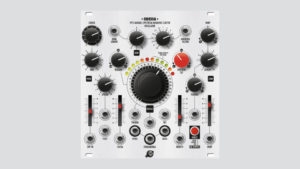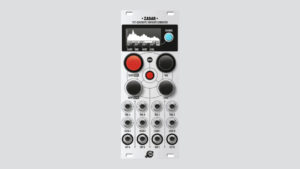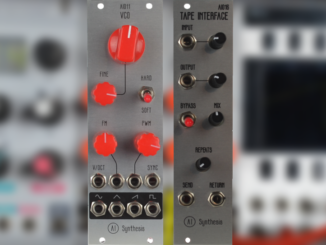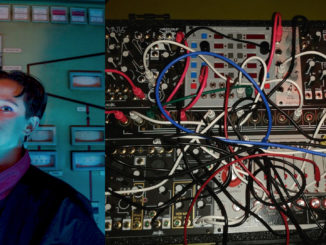Xaoc Devices will present at SuperBooth 2018 Odessa, a powerful additive oscillator and a Zadar a modern quadruple envelope generator for the Eurorack format.
Just before the start of this Superbooth, Xaoc Devices from Poland announced two interesting new Eurorack modules. Odessa is a new powerful oscillator and Zadar a new quadruple envelope generator with up to 200 shapes.
Xaoc Devices Odessa: 1975 Variable Spectrum Harmonic Cluster Oscillator
Overview
Odessa implements the principle of additive synthesis controlled by a set of carefully tailored marco parameters to harness thousands of sinusoidal partials that altogether form the resulting sound.
The interface is kept simple and accessible, so you can easily build rich and full, great sounding timbres of very complex spectra, that can be either harmonic or inharmonic. Even though inharmonic spectra yield non-periodic waveforms, all partials are frequency related to the common fundamental controlled by a V/oct input. The series of harmonics can be squeezed or spread apart, tilt, and pruned by a comb-like frequency response, resulting in a variety of unearthy sounds. Animating the comb response yields radical effects similar to flanging and phasing. Additional, often sought after features are implemented: through-zero linear frequency modulation, and unison detune: up to 5 copies of the sound can be spread apart for a fat and dense cluster of voices.
There are nine parameters, each controlled by a dedicated knob, so the workflow is as smooth and immediate as possible. Furthermore, every parameter has a dedicated CV input, allowing live animation for organic audio effects. Odessa sports two main outputs for banks of harmonic partials that can be further scaled in frequency, as well as an additional output that can either spit out a square wave or a a single sinusoid of the fundamental frequency. Interesting spatial effects, crazy modulation feedbacks as well as synchronisation is possible that way.
The hardware is based on a powerful FPGA chip offering massive parallel computing. The synthesized signal is devoid of aliasing through the entire audio range thanks to intrinsically bandlimited algorithm. A simplified spectral analyzer helps you to keep a visual track of what is actually happening to the harmonics.
Features
- Additive synthesis engine
- 2500 harmonic partials generated
- Straightforward user interface
- Through-zero linear frequency modulation
- Detuneable clusters of up to 5 voices
Xaoc Devices Zadar 1973 Quadruple Envelope Generator
Overview
Based on the general idea of synthesis by deformable vector shapes, Zadar allows you to choose from a wide variety of envelope functions, designed to suit pretty much any possible usage scenario. From basic and simple to complex transients, from looped modulation cycles to rhythmical patterns, from quasi-randoms to perfectly regular functions, natural envelopes extracted from various acoustic and electronic instruments, abstract fractals and physical models, etc. — they all work great as envelopes but also as stepped sequences, LFOs, resonator exciters and so on.
Starting with one of (literally) hundreds of shapes defined by freely scalable vectors of breakpoints stored in the memory, envelopes can be tweaked and adjusted to the heart’s content. Each shape consists of up to a thousand of segments, and it may be warped in time and amplitude, reversed, stretched from a fraction of milisecond to about 20 minutes, and of course attenuated. By manipulating these parameters you can easily obtain a plethora of new shapes, but it doesn’t end here.
Envelopes can be repeated, looped, chained and each channel sports a freely assignable CV input, allowing for most of the above mentioned transformations to be externally controlled as well.
Operating Zadar is quick and straightforward thanks to the set of four “endless” encoders. Menu diving has been reduced to minimum, and is actually only needed for the advanced settings. A crisp OLED screen provides the necessary visual feedback in real time. All the settings can be stored and organised in preset slots.
There are plans for even more functions to be added in later firmware revisions. Also, a small but very useful Nin expander module is planned, sporting yet another set of individual, assignable CV inputs and manual trigs for each channel for better tweaking comfort.
Features
- Four indepenent channels
- More than 200 unique shapes
- Cycle time range: 0,08ms to 20 sec.
- Shapes can be radically modified in two dimensions
- Complex envelope looping and chaining features
- Assignable CV inputs to cotrol almost every parameter
- Preset slots
Price & Availability
There are no information available when the modules will be available. Odessa will cost around 420€ and Zadar 290€.
More information here: Xaoc Devices






Be the first to comment